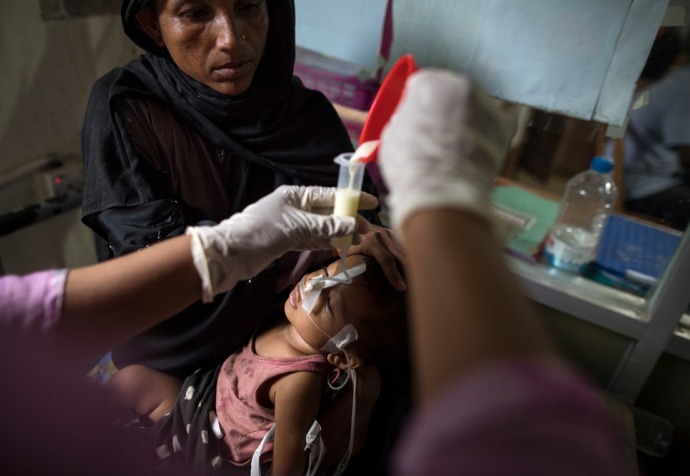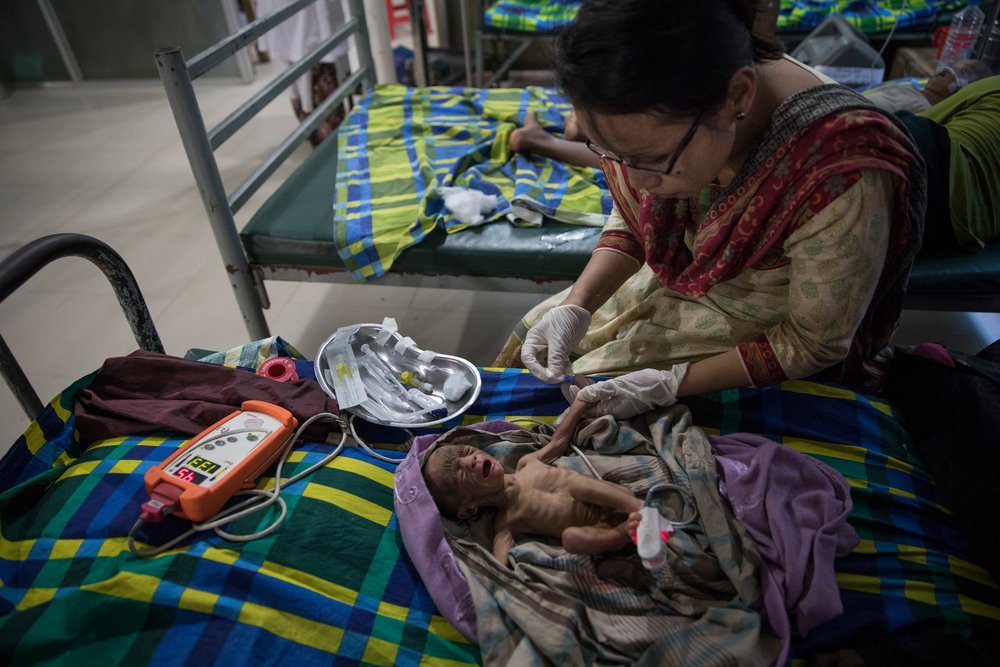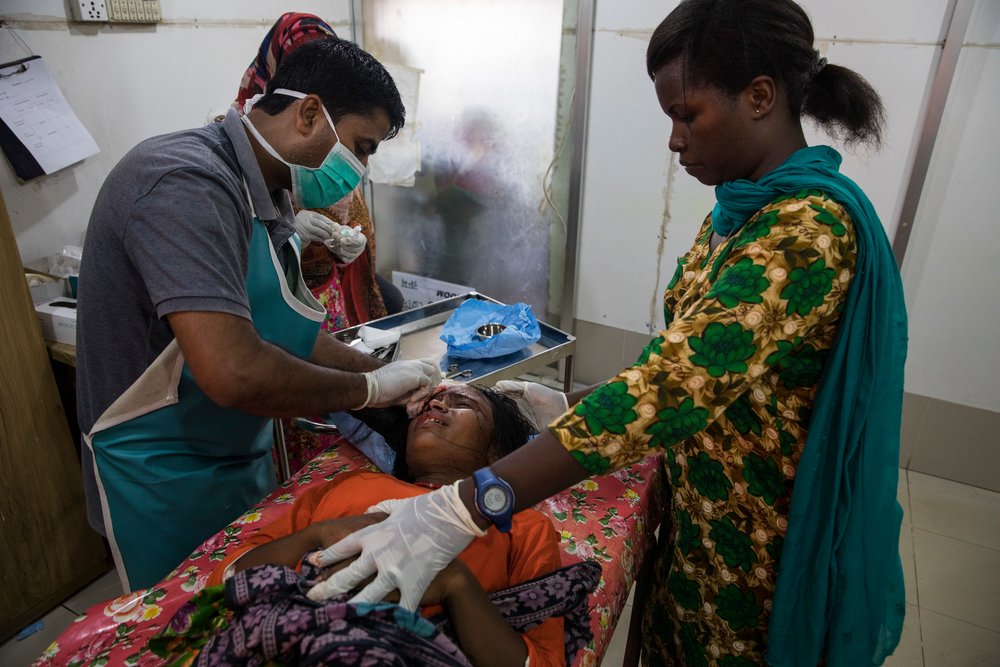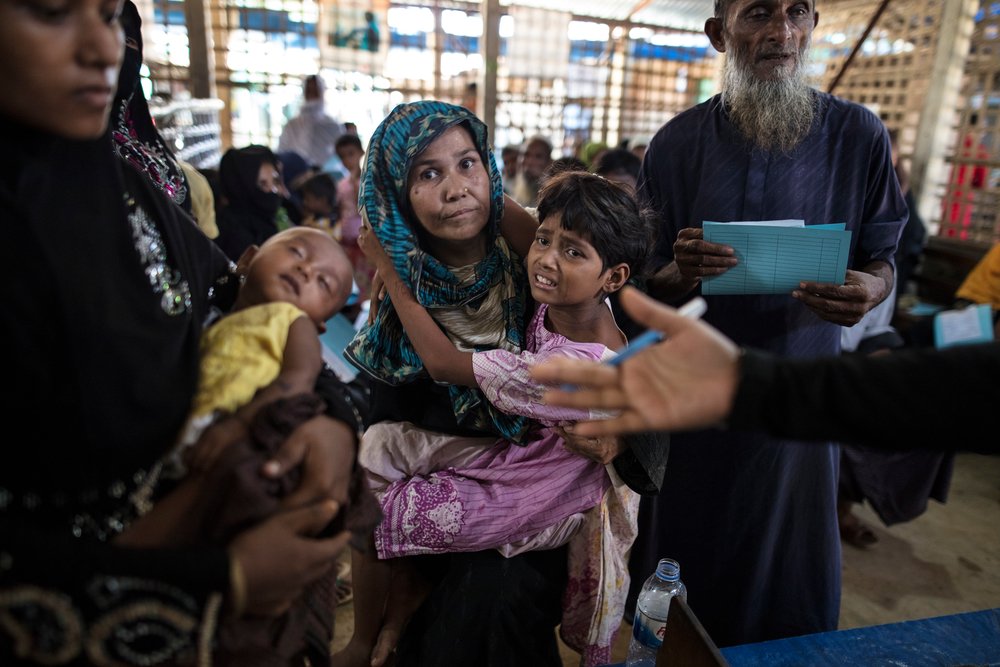This is still a population teetering on the edge; not because our services are low, but because the existing infrastructure is making access difficult. The terrain is difficult, it’s muddy, it’s extremely hilly, it’s up and down and turnaround and you’re lost – you can’t remember where you came from.
Our teams are bringing everything into the camps on foot, including technical equipment, brought in to build latrines and install safe water supply systems. Bricks, sacks of sand and cement and all the typical building supplies are carried into the camps. Supplies going into the health posts are carried in as far as one hour from the main road. It’s difficult to get patients out in an emergency when they’re sick – some are being stretchered by our outreach workers, who navigate through difficult terrain for hours at time, to get to the closest hospital.
Services will never quite be where they’re meant to be for this population and it will continue to be extremely precarious. It’s two steps forward and one step back. We are getting there, we are making progress, but every time we move forward there’s an inevitable step back. But in saying that, I remain optimistic. This is a resilient population. The services are available and people are defying the odds and finding ways to get things up and running.





